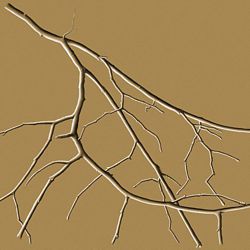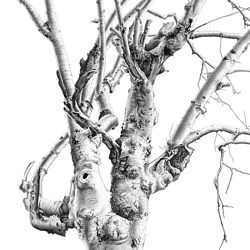- tree-painting-step-7
How to Paint a Tree
- tree-painting-step-1
How to Paint a Tree - Step 1
- tree-painting-step-2
How to Paint a Tree - Step 2
- tree-painting-step-3
How to Paint a Tree - Step 3
- tree-painting-step-4
How to Paint a Tree - Step 4
- tree-painting-step-5
How to Paint a Tree - Step 5
- tree-painting-step-6
How to Paint a Tree - Step 6
- tree-painting-step-7
How to Paint a Tree - Step 7
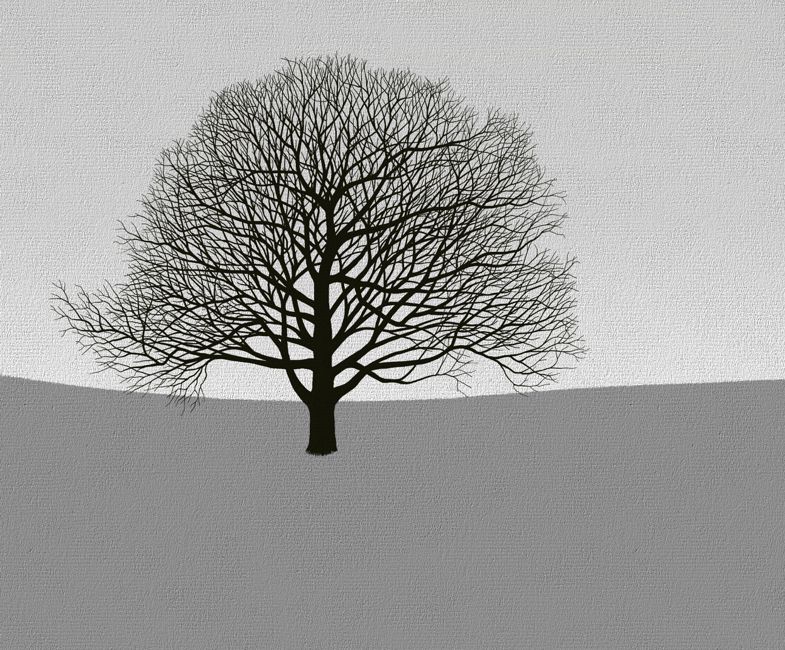
This slide show illustrates the step-by-step process used to paint a tree from your imagination.
-
It is a straightforward method that starts with a simple outline and gradually builds up layers of branches to create a realistic tree.
-
We then use this image as the subject for four paintings that capture the colors of each season.
How to Paint a Tree - Step 1

It is important to paint any background first so that you can paint the tree over it. Otherwise, you end up painting the background spaces between the branches which is a thankless task.
How to Paint a Tree - Step 2
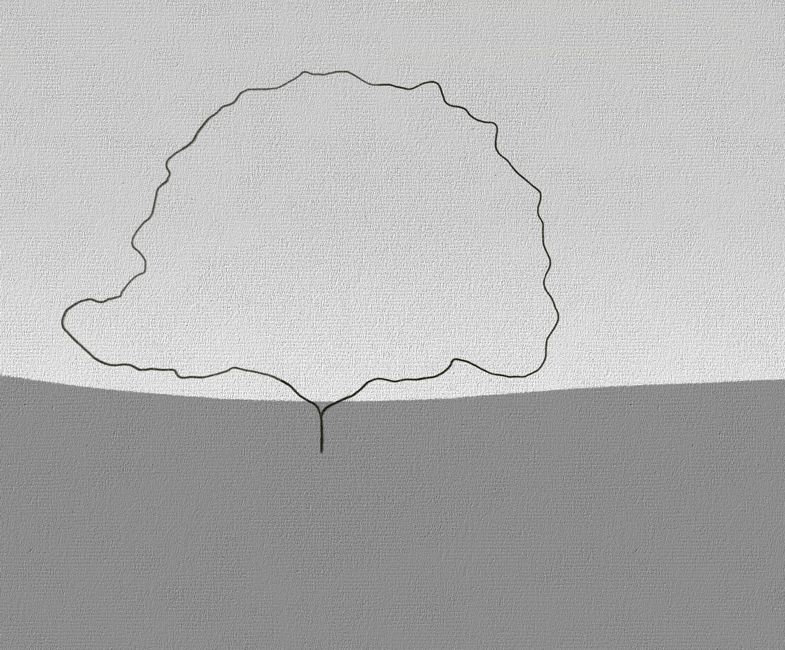
We begin by drawing the outline of a tree in pencil (or any non-permanent medium) as we will erase this at a later stage.
-
Trees have a variety of outline shapes that could be round, triangular, oval, conical or any irregular variation of these.
-
For our example we have chosen the type of irregular shape you would see in an oak tree.
How to Paint a Tree - Step 3
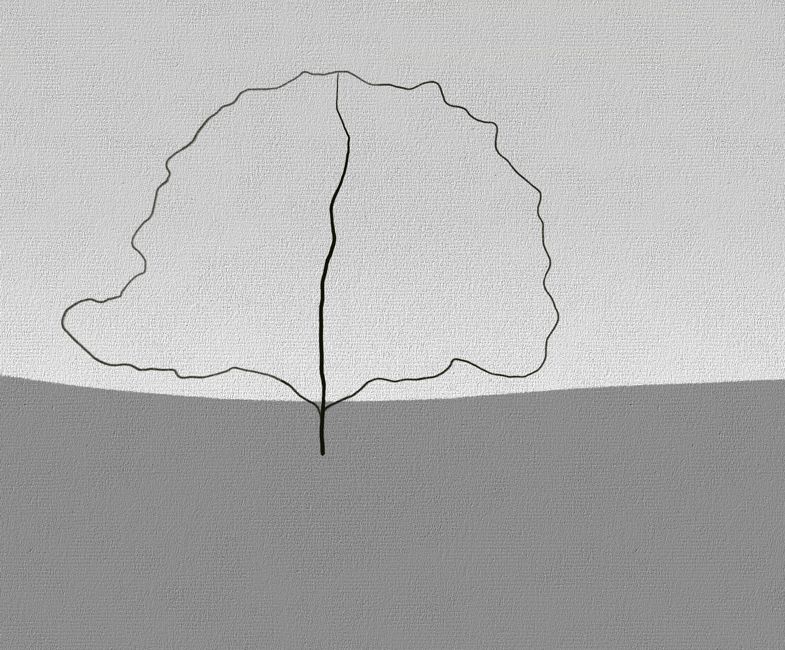
Start by painting the trunk with a slender brush stroke that gently tapers from the ground up. Allow the stroke to gently twist and bend as this will suggest its various cycles of growth.
-
Branches are a combination of straight lines, curves, and joints. The straight lines, curves, and joints are the result of separate cycles of annual growth. With each cycle the line of the branch may change, fork, and taper. This tapering should be reproduced in the style of brush strokes you use. When painting a tree from your imagination, it helps to understand its patterns of growth. Before starting this lesson, it may help you to look at our lesson on drawing branches of trees.
How to Paint a Tree - Step 4
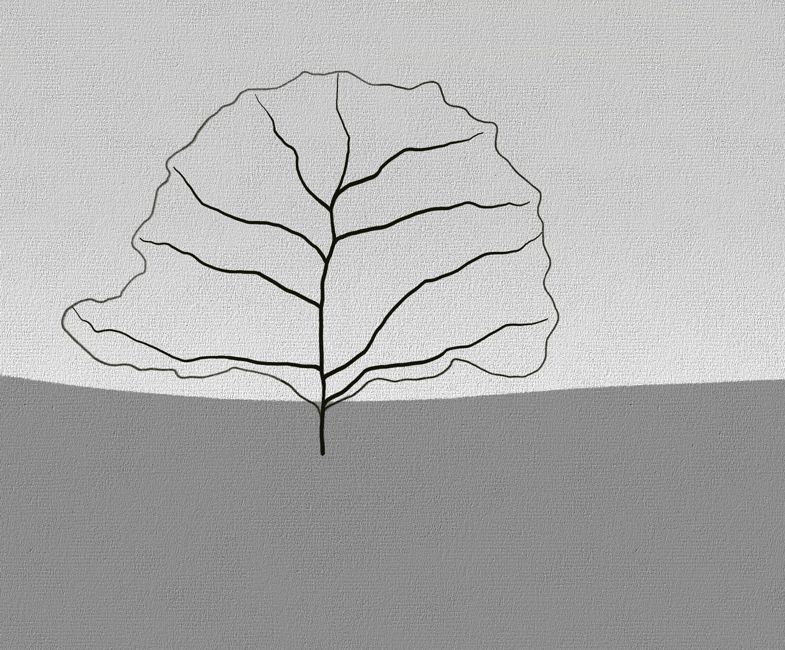
Next, we paint a few branches on each side of the trunk, gradually tapering as they radiate to the edge of the outline.
-
These should also twist and bend to suggest their annual surges of growth.
How to Paint a Tree - Step 5

Using a smaller brush to paint more delicate strokes, we now add some thinner branches whose limbs fork as they develop.
-
These strokes should get progressively finer as they move towards the outline of the tree, imitating the natural tapering of the branches as they grow.
How to Paint a Tree - Step 6

For the penultimate step, we erase the pencil outline and increase the quantity of thinner branches around the edge of the tree.
How to Paint a Tree - Step 7

Finally, starting with the trunk, we thicken all the interior branches, progressively thinning them down as they radiate outwards and upwards towards the margins of the tree.
-
We now have a basic tree shape that we can use to portray the seasonal changes that nature generates as it transforms its character throughout the year.
- spring-tree-10
How to Paint a Tree in Spring
- summer-tree-10
How to Paint a Tree in Summer
- autumn-tree-10
How to Paint a Tree in Autumn
- winter-tree-10
How to Paint a Tree in Winter

Our slide show illustrates the outcome of these lessons, where the image of a single tree is transformed as it changes color with each season.
-
How to Paint a Tree in Spring - The colors of spring are associated with the start of new growth. They are usually paler hues as they are in an early stage of development.
-
How to Paint a Tree in Summer - The colors of summer, as foliage and flowers reach full bloom, have the most intense saturation of hues.
-
How to Paint a Tree in Autumn - The colors of the autumn are brought about by the breakdown of the pigment in the leaves, which turns them from their green summer foliage into the earthy browns, reds, oranges, and yellows at the warm end of the spectrum.
-
How to Paint a Tree in Winter - The colors of winter are associated with the chill of ice, snow and frost and come from the cool end of the spectrum, generally blues, greens, and violets.
In the following pages we examine the various stages of how to paint a tree as it progresses through each of the four seasons.






